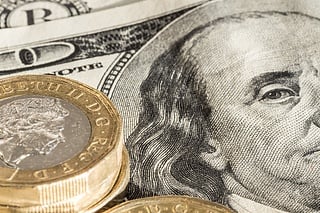GBP/USD lurches higher but still exposed to downside
|
- GBP/USD caught a bounce from the 200-day EMA on Thursday.
- Markets recover footing after US labor data plunge.
- Key inflation data for both the UK and US due next week.
GBP/USD found a step higher on Thursday, climbing roughly half of a percent as market sentiment continues to spool back up after a three-day plunge that kicked off in earnest late last week following a misprint in US Nonfarm Payrolls (NFP) figures.
Forex Today: Market turbulence dissipates
Friday will close out the trading week with a thin economic calendar on both sides of the Atlantic, and markets will be gearing up for fresh updates on inflation in both the UK and the US. The Pound Sterling took a beating after a recent quarter-point rate cut from the Bank of England (BoE), and markets are on the lookout for signs of further UK rate cuts and an initial rate trim from the US Federal Reserve (Fed) expected in Semtember.
US Initial Jobless Claims for the week ended August 2 printed at 233K, less than the forecast 240K and easing back from the previous week’s 250K. Cooling initial unemployment figures are helping investors keep a lid on recent downturn fears after last week’s US labor data dump sparked a firm risk-off bid.
US data watchers will be looking forward to a fresh round of producer—and consumer-level inflation figures due next week. US Producer Price Index (PPI) inflation is slated for next Tuesday, with Consumer Price Index (CPI) inflation on the books for next Wednesday. On the UK side, UK labor figures are expected on Tuesday, followed by a July update on UK CPI inflation.
GBP/USD price forecast
Cable’s bullish bounce on Thursday is poised to chalk in a topside run after bids pinged off the 200-day Exponential Moving Average (EMA) at 1.2672. Bidders will be looking to claw back chart paper lost in a -2.9% backslide from 12-month highs set in mid-July near 1.3050.
Bullish momentum will need to climb back over the 50-day EMA at 1.2780 with price action mired in divergence territory between the 50- and 200-day EMAs.
GBP/USD daily chart

Pound Sterling FAQs
The Pound Sterling (GBP) is the oldest currency in the world (886 AD) and the official currency of the United Kingdom. It is the fourth most traded unit for foreign exchange (FX) in the world, accounting for 12% of all transactions, averaging $630 billion a day, according to 2022 data. Its key trading pairs are GBP/USD, aka ‘Cable’, which accounts for 11% of FX, GBP/JPY, or the ‘Dragon’ as it is known by traders (3%), and EUR/GBP (2%). The Pound Sterling is issued by the Bank of England (BoE).
The single most important factor influencing the value of the Pound Sterling is monetary policy decided by the Bank of England. The BoE bases its decisions on whether it has achieved its primary goal of “price stability” – a steady inflation rate of around 2%. Its primary tool for achieving this is the adjustment of interest rates. When inflation is too high, the BoE will try to rein it in by raising interest rates, making it more expensive for people and businesses to access credit. This is generally positive for GBP, as higher interest rates make the UK a more attractive place for global investors to park their money. When inflation falls too low it is a sign economic growth is slowing. In this scenario, the BoE will consider lowering interest rates to cheapen credit so businesses will borrow more to invest in growth-generating projects.
Data releases gauge the health of the economy and can impact the value of the Pound Sterling. Indicators such as GDP, Manufacturing and Services PMIs, and employment can all influence the direction of the GBP. A strong economy is good for Sterling. Not only does it attract more foreign investment but it may encourage the BoE to put up interest rates, which will directly strengthen GBP. Otherwise, if economic data is weak, the Pound Sterling is likely to fall.
Another significant data release for the Pound Sterling is the Trade Balance. This indicator measures the difference between what a country earns from its exports and what it spends on imports over a given period. If a country produces highly sought-after exports, its currency will benefit purely from the extra demand created from foreign buyers seeking to purchase these goods. Therefore, a positive net Trade Balance strengthens a currency and vice versa for a negative balance.
Information on these pages contains forward-looking statements that involve risks and uncertainties. Markets and instruments profiled on this page are for informational purposes only and should not in any way come across as a recommendation to buy or sell in these assets. You should do your own thorough research before making any investment decisions. FXStreet does not in any way guarantee that this information is free from mistakes, errors, or material misstatements. It also does not guarantee that this information is of a timely nature. Investing in Open Markets involves a great deal of risk, including the loss of all or a portion of your investment, as well as emotional distress. All risks, losses and costs associated with investing, including total loss of principal, are your responsibility. The views and opinions expressed in this article are those of the authors and do not necessarily reflect the official policy or position of FXStreet nor its advertisers.